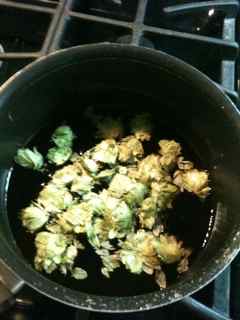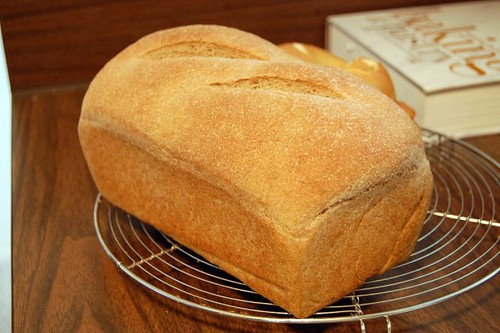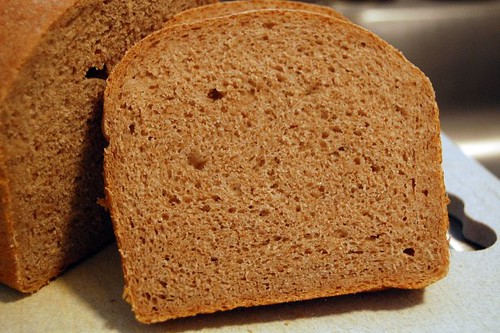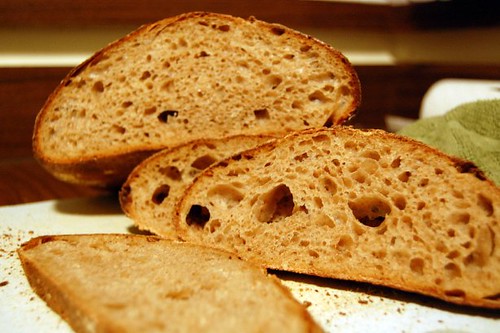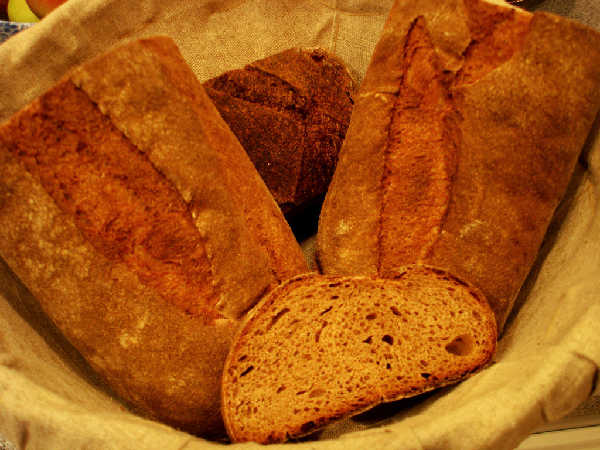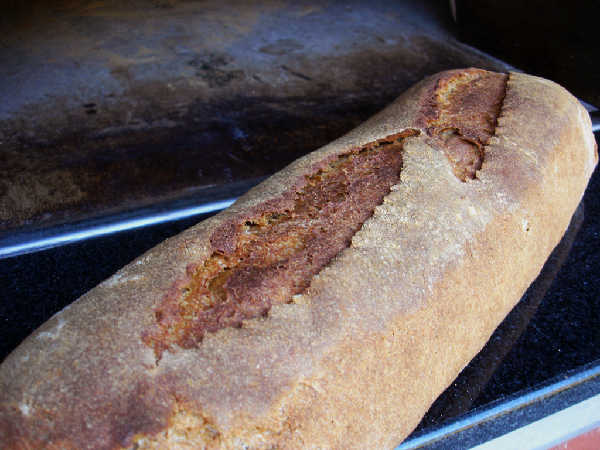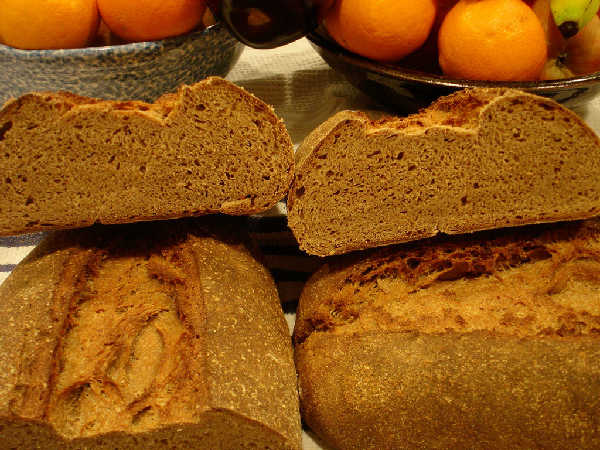
This is a recipe idea I've wanted to try since I started milling and sifting my own flour. My milling and sifting process results in a few grades of flour and bran, but in total they represent the entire contents of the whole grain. My idea was to process the different grades of flour in different ways, hopefully resulting in a better whole grain bread. In particular, I very much enjoyed the flavor and texture of the mash bread recipe from WGB by Peter Reinhart, which I blogged a while ago. This recipe is derived from the mash bread recipe and some other ideas in WGB, but it takes advantage of the fact that I have available various separate components of the whole grain flour. The resulting bread, made as described below, is very good, maybe my favorite whole grain bread so far.
I've posted a spreadsheet in xls and html format showing the recipe and sourdough timing. I'm not providing a whole recipe in the blog in this case. Since the ingredients will vary so much, and I used particular output from my milling and sifting process, it's more of an idea than a recipe. Anyone who tries it will have to carefully read WGB's mash bread recipe, look at my spreadsheet, and then make up a recipe to fit available ingredients and/or sifting equipment. I've also posted some additional photos.
To make this bread, I first simmered the bran and very dark coarse granular flour from my milling and sifting process for a few minutes. The idea is to soften the high fiber components of the whole grain flour. Then, when the simmer cooled to about 165F, I added "golden flour", which is higher ash content flour from the first and last siftings. I maintained the temperature at around 150-155 for a couple of hours to get a dark, sweet mash. The mash was refrigerated. Meanwhile, I fermented a levain of whole rye, whole spelt, and some of the whiter flour from my sifting process. In the morning I combined the mash, the levain, and all the remaining whiter flour from my sifting process along with some salt and malt syrup to make the final dough, which rose and was baked later in the day.
Admittedly, this is difficult to duplicate at home unless you have a couple of fine sieves and access to a coarse stoneground whole grain flour. However, a similar recipe should be possible by separating out the bran and larger particles with a fine sieve, simmering that, then adding some of the remaining flour to make the mash, then using all the remaining flour in the final dough.
Using store bought ingredients, another similar version could be to use store bought bran for simmering, a high extraction artisan flour (like Heartland Mill Golden Buffalo) for the mash, and white flour for the remainder. Yet another version might be to use store bought bran for the simmer, store bought wheat germ and white flour for the mash, and white flour for the remaining flour. Or, it would probably work to use store bought bran for the simmer, whole wheat flour for the mash, and white flour and store bought wheat germ for the remainder. All of the above are the same in spirit, which is to reconstitute the components of whole wheat flour in total, while simmering separately the coarser bran, mashing darker flour, and then adding lighter flour to the final dough.
Very roughly, the bran should constitute some 10-15% of the recipe, the dark flour added into the mash should be about 25% of the total flour, and the rest should be lighter flour. Wheat germ, if used, should total about 3% of the weight of flour. Evaporation and some mash left in the pan means you have to estimate the remaining water and flour in the mash, in order to then have the right amounts of flour and water in the remainder of the recipe. Another interesting flour to try in the mash, if you are going with a store bought duplication, is first clear flour. The character of the "darker" flour I added to my mash is somewhat like first clear flour.
Also, as in all the WGB recipes, you could easily make this a yeasted recipe by replacing my levain with a yeasted biga and adding some yogurt or other fermented milk product to bring up the levels of fermentation acids in the final dough.
The resulting bread has a soft, dense crumb, which is normal for mash bread. However, the unique flavor from the mash and the soft, spongey texture more than make up for the somewhat more dense crumb. The lighter color results from the fact I milled and sifted a 50/50 combination of Wheat Montana Prairie Gold and Wheat Montana Bronze Chief. The Prairie Gold berries are hard white spring wheat berries, which have a much lighter color of bran, resulting in a lighter color. I also prefer a mixture of white and red wheats, which results in a milder but not bland flavor that I prefer to either 100% red wheat or 100% white wheat. The more dense and soft crumb makes it an excellent bread for sandwiches or to use with tahini, peanut butter, honey, and so on. I had some this morning for breakfast, and it is one of my favorite whole grain breads, if not the all time favorite.







